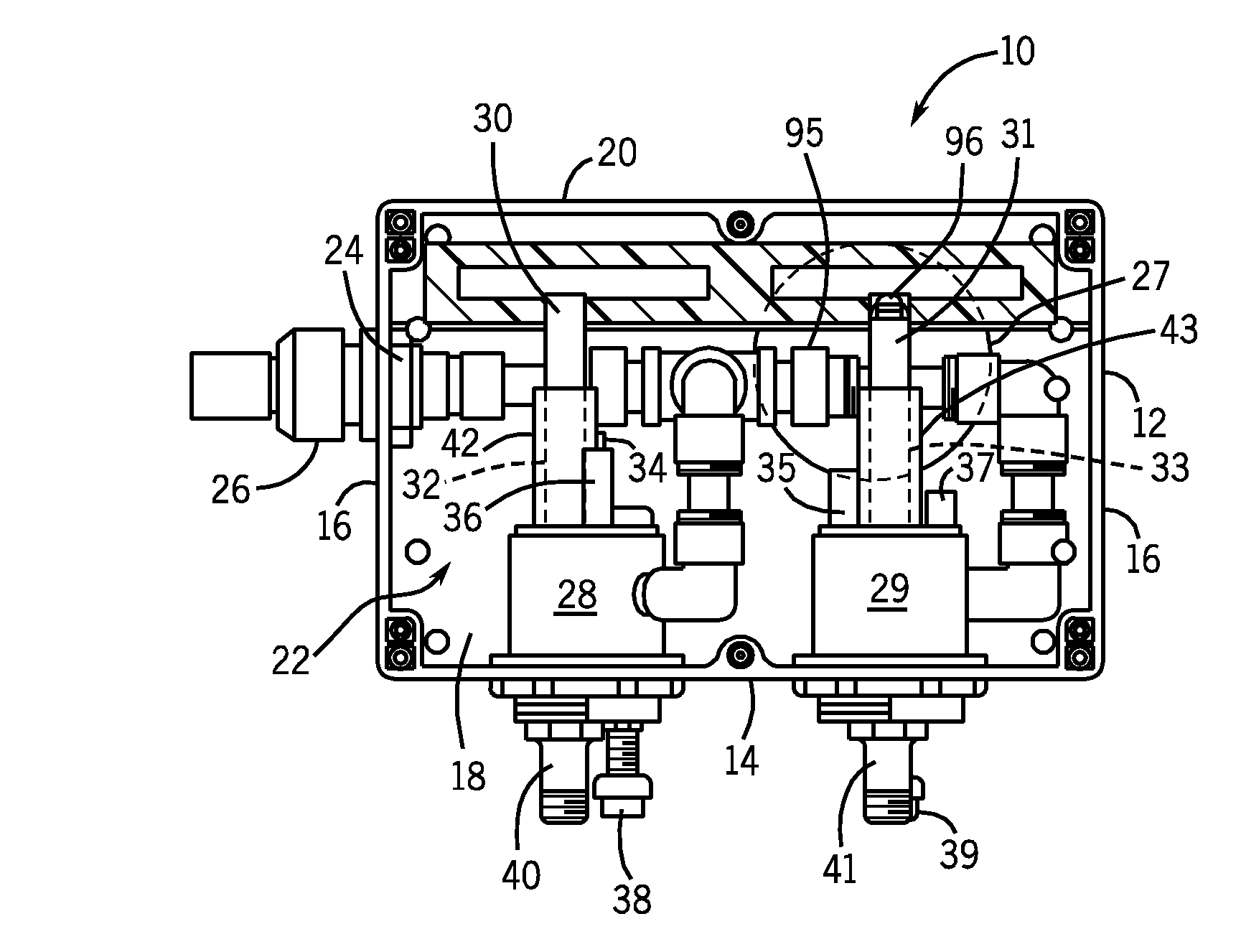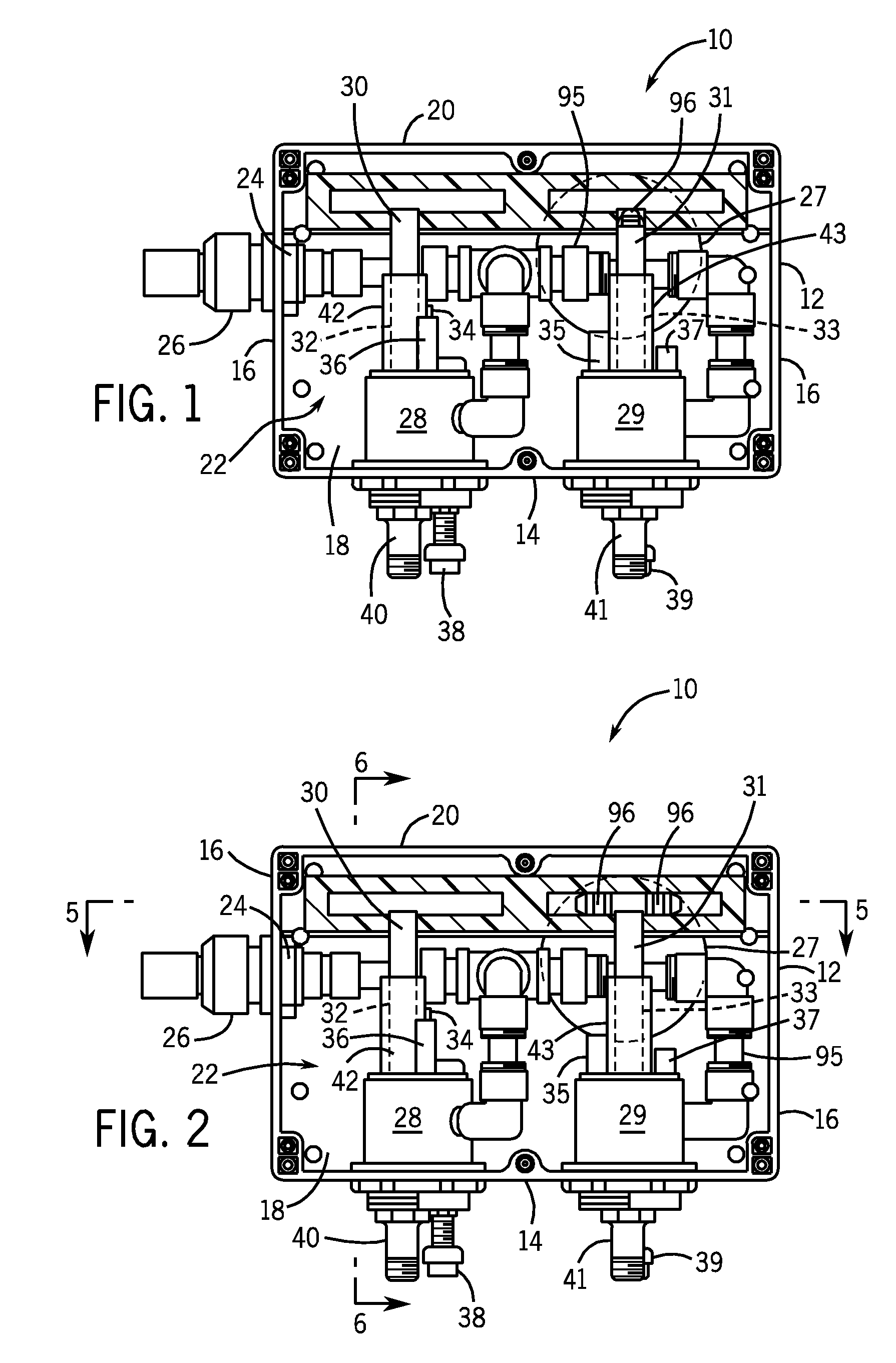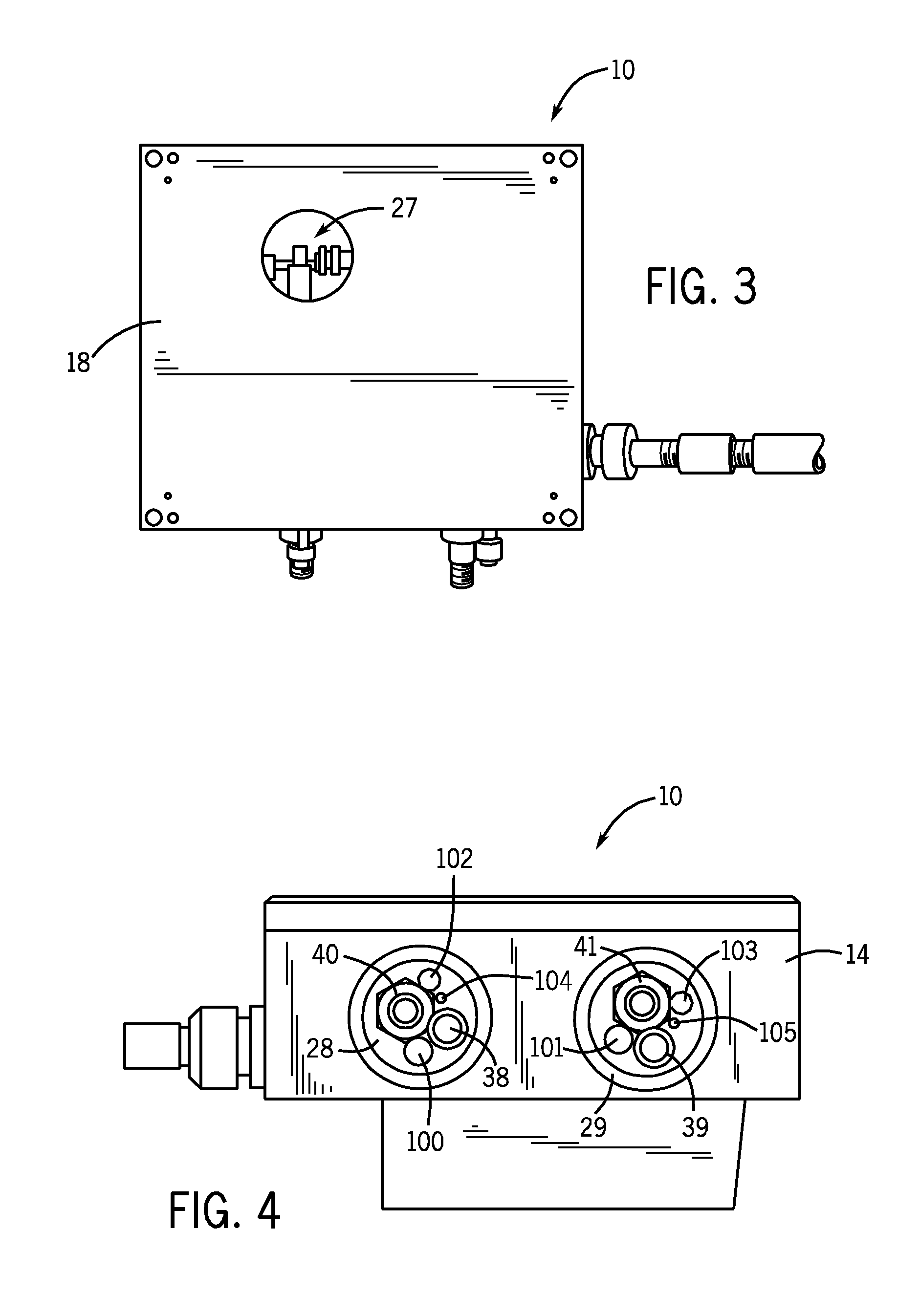Two-stage cooling system
a cooling system and two-stage technology, applied in the field of two-stage cooling systems, can solve the problems of affecting the operation of the cooling system, and the safety of the user, so as to reduce the noise, dampen the noise, and dampen the noise
- Summary
- Abstract
- Description
- Claims
- Application Information
AI Technical Summary
Benefits of technology
Problems solved by technology
Method used
Image
Examples
Embodiment Construction
[0036]FIG. 1 illustrates a front perspective interior view of a two-stage cooling system 10 according to an embodiment of the present invention. The cooling system 10 includes a cabinet 12, which may be formed of polycarbonate, that includes a base 14 integrally formed with lateral walls 16, and a rear wall 18. The lateral walls 16 and rear wall 18 are, in turn, integrally formed with an upper wall 20. The base 14, the lateral walls 16, the rear wall 18, and the upper wall 20 define a venting chamber 22 therebetween. A removable front cover (not shown in FIG. 1) is secured to edges of the base 14, lateral walls 16, and upper wall 20 to enclose the venting chamber 22.
[0037]A gas inlet passage 24 is formed through one of the lateral walls 16. The gas inlet passage 24 is configured to receive and retain a gas delivery tube, pipe, duct, or the like 26 of a gas (such as air) compression system (not shown in FIG. 1). The gas inlet passage 24 may securely retain the gas delivery pipe 26 th...
PUM
 Login to View More
Login to View More Abstract
Description
Claims
Application Information
 Login to View More
Login to View More - R&D
- Intellectual Property
- Life Sciences
- Materials
- Tech Scout
- Unparalleled Data Quality
- Higher Quality Content
- 60% Fewer Hallucinations
Browse by: Latest US Patents, China's latest patents, Technical Efficacy Thesaurus, Application Domain, Technology Topic, Popular Technical Reports.
© 2025 PatSnap. All rights reserved.Legal|Privacy policy|Modern Slavery Act Transparency Statement|Sitemap|About US| Contact US: help@patsnap.com



